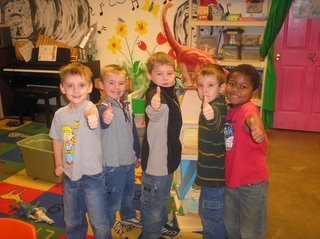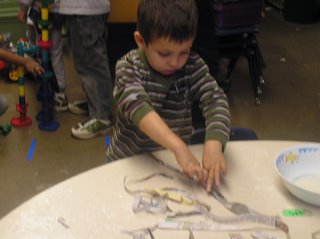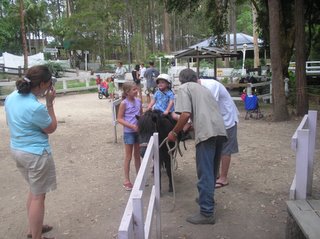
This is a powerful article written by an American and published in a Parisian magazine. I agree with about half of it. I don’t think it’s the government’s role to monitor all education. I think that there should be government schools, but I think there should be an equal balance of private schools because that creates balance. Private schools also offer a kind of change and growth and challenge not seen in the public system. Private schools are the model makers not the public system. The creativity found in the private sector will always be superior to what the state can do. That’s why Catholic schools trying desperately to become like public schools is such a waste and such a shame.
Educating the poor is a whole other ball game than educating the financially solvent. Headstart is a good thing if a child has nothing, but as a child moves up the economic ladder, programs like Headstart don’t offer much.
The other problem with early childhood is that in many places – like Evansville – there is an old guard grasp on the business of educating young children that won’t budge. It’s caught in the 1970’s trends and can’t move from cubbyhole warehousing to real education. They won’t give credibility to anyone who is moving out of the warehouse, and they blackball anyone doing more than “babysitting.” It’s so evident when you get children from an early childhood center in the main stream. They can’t hold a crayon, don’t know a letter, and can’t listen to a story. Then you realize what is not going on in the warehouse grasp of the powers that be. And that’s where the money goes.
The very idea that all four year olds should go to preschool is about as ignorant as saying all children should start kindergarten at 5. Everyone learns differently. We have two five year olds in the preschool and two in the kindergarten and two in the first grade. Each one is working to his or her best effort, but their abilities vary a lot. By placing all of them in one grade – kindergarten, there will be two bored children, two doing fun stuff, and two who don’t understand a thing.
It seems to me that parents are the impetus for education. That means if a child has to be really ready to start kindergarten, more will be done to make that possible. Yanking a child off to the public system who is barely potty trained and expecting that child to go from helpless to educated by a teacher who is over worked does no one a service.
Individuality should be best guarded at 3,4,5. Pushing, smothering, boring, ignoring a child in that age range inhibits learning rather than encourages it.
My effort would go to private and public preschools that would offer a three year program for kids ( ages 3-6) to make their way through in as much time as it took to do the work so that they could go on to first grade successfully. Entering first grade knowing how to listen, how to read a little and how to be a good friend would make teaching grammar school a breeze. It’s then that we could fly as a nation of learners.
Newropeans Magazine
Written by Francesco Bonavita
Monday, 16 January 2006
Ever since the publication of Jean Jacques Rousseau’s Emile ou l’éducation an unprecedented interest in child development was unleashed which, to this day, continues uninterruptedly. A great body of research on early child education continues to heighten public awareness not only among educators but parents as well who would like nothing more than to find an essential guide on when to begin formal education.
A study published recently by the Rand Corporation has focused on the merits of early childhood intervention as a preventive measure to lower the drop-out rate and to shrink crime statistics substantially. The study attaches a monetary value to the idea of introducing education at an earlier age. In the Los Angeles County alone, for instance, such an early educational head start would lower the drop out rate annually approximately by 3,000 students. The study further projects a dramatic reduction of crime among youth by 10,000 per year.
These data are being offered at a time when school officials in California are considering presenting an early universal preschool initiative before the voters. If this is approved, educators are envisioning that for every $1 spent on preschool related activities, $2.50 in financial benefits would be generated in return, as well as reducing crime rate, drop out rate, teenage pregnancy and having fewer students repeat grades.
These statistics are indeed impressive but they do not reveal the intrinsic benefits of a preschool program, such as the impact of socialization on children. Early education promotes non-cognitive abilities, such as motivation, social interaction and self-control, as well as cognitive skills, such as distinguishing geometric shapes, differentiating colors, and gaining musical awareness. This early intervention promotes the necessary skills to function in a competitive society.
There is a growing awareness among educators that a correlation exists between preschool and formal schooling. In countries where pre-formal education is greatly valued the child’s chances for success are increased dramatically. Julia Whitburn, an observer of Japanese schooling, in her study, “Learning to Live Together: The Japanese model of early years education,” published in the International Journal of Early Years Education, reports that first and second grade children are the indisputable beneficiaries with a firm handle on learning. Whitburn shows that Japan’s long tradition of universal preschool ensures that children perform well in their learning rate, as well as exhibiting self-reliance and independence, enthusiasm and self-confidence, essential components for educational success.
The Bill & Belinda Gates Foundation, which has become a notable contributor to improving the quality of education around the world, has set aside $90 million that is intended to fund early schooling in the state of Washington, during the next ten years. Apparently, the Foundation subscribes to the notion that preparing children for kindergarten can impact significantly on the learning disposition of future students. This is a remarkable initiative for it validates preschool essentially beginning with the cradle phase of child rearing up to the age of five. In some ways, the Foundation echoes the Reggio Emilia approach, which believes in educating the child from the very beginning stages of infancy.
Given the amount of research conducted in this area, one would think that governments are ready to embrace the notion of head start in an effort to better prepare future students upon entering kindergarten. Unfortunately, universal preschool in the United States is still a long way from becoming a reality. For the most part, preschool programs fall under the domain of private enterprises and, as such, they are quite expensive and inaccessible to families with a limited budget. This preschool issue represents a blatant educational divide between those who have the means and those who are struggling to make ends meet.
Critics of early childhood education are quick to point out that this initiative is a costly proposition and that the government should not interfere let along intervene in preschool activities. The conservatives have argued for greater teacher accountability, more parental involvement, a safer and orderly environment where children can learn, raising academic standards, and advocating a return to basics. While there is no question that these recommendations are important in terms of improving the educational performance for our children, they fall short of introducing a bolder reform where all children can have an equal playing field.
Four years ago, President Bush signed the No Child Left Behind bill that was designed to close the educational divide by 2014. This legislation, thus far, has had a minimal impact on minorities as they are still lagging considerably behind. Many schools in America are working with a nineteenth century infrastructure with limited opportunities for extra-curricula activities.
The idea of vouchers where parents can enroll children in private schools by getting federal credit does not necessarily improve the quality of learning. This is a rather simplistic approach aimed at chipping away from the public educational system. It is important to find a way to assist schools when they fail rather than punishing them. A bolder proposal is needed; one which envisions an educational program that can generate excitement for learning and one way to attain this is to invest in preschool initiatives. A universal preschool that is accessible to all children is crucial to eliminating the achievement gap between disadvantaged students and the rest of America’s students.
Similarly, we need to increase federal spending on education. It is estimated that the US spends something on the order of $700 billion on schools, much of which comes from individual states and only a small percentage can be attributed to federal monies. While there is nothing in the American Constitution about the responsibility of government with respect to education, arguably an educated citizen that can compete in the Twenty-first century ought to be everyone’s preoccupation.
Investing in the young is a rational public policy in so far as it fosters social justice and economic opportunities for everyone. This is what James J. Heckman, the Nobel laureate in economics in 2000 from the University of Chicago, proposes in order to correct years of governmental neglect. A whole slew of studies in neuroscience, psychology and social science demonstrates exceedingly well the need, according to Heckman, to intervene in the early phases of learning way before the child falls irreparably behind with respect to cognitive and non-cognitive abilities.
The issue of preschool is fundamental for it sets the tone not only for children but for parents as well. The idea that formal learning at preschool levels ought to be indispensable is a matter that is vital to future generations. A social transformation has taken place in America where close to 50% of the families are sending their children to some form of preschool. This change is dictated by economic necessities where, more often than not, both parents and single mothers have to work.
The number of private child care institutions has proliferated at an unprecedented rate during the last two decades and there are no signs that this trend will come to a halt anytime soon. The problem with these preschool programs, however, is that they are not always educationally sound. While the research clearly demonstrates how children can benefit from preschool it does not necessarily mean that simply by enrolling a toddler in a custodial setting leads to intellectual growth. Early child care programs must be able to afford learners an opportunity to be fully engaged and to interact with other children. It is essential to have the child give meaning to its fantasies, to unfold its creative powers and to create an environment where the multi-dimensional personality of the learner can begin to emerge.
It is important to ensure that a preschool program is of the highest quality, providing worthwhile activities that lead to educational growth for all children. This is an area that is still expanding and it is the government’s task to provide policies in an effort to maintain a certain degree of uniformity and consistency. Universal preschool that delivers effective educational practices can not only strengthen the child’s level of readiness in terms of meeting the social academic rigors of schooling but it can ultimately achieve educational equality, a dream clearly cherished by the late Martin Luther King Jr.
Francesco BonavitaKean University Union, New Jersey (United States of America)

 If I could pick a place to travel, I would like to go to Irian Jaya and go out into the wilds to visit with the tree people or the Kombai. I think it would be so neat to visit one of our remaining stone age peoples. To wake in the morning fifty feet in a tree would be an outstanding adventure. To learn to cook without utensils, without pots and pans would be a real treat. Not sure about eating larvae – they say it’s a bit like exploding pus pockets.
If I could pick a place to travel, I would like to go to Irian Jaya and go out into the wilds to visit with the tree people or the Kombai. I think it would be so neat to visit one of our remaining stone age peoples. To wake in the morning fifty feet in a tree would be an outstanding adventure. To learn to cook without utensils, without pots and pans would be a real treat. Not sure about eating larvae – they say it’s a bit like exploding pus pockets.







